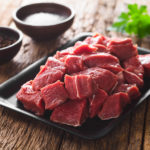By David Blyweiss, M.D., Advanced Natural Wellness
When we were kids, most of us had an itchy miserable case of chickenpox. And, since there wasn’t a vaccine for it back in those days, many mothers deliberately tried to get their little ones infected.
Why?
Because once you got chickenpox, you were protected against ever getting it again.
But here’s what your mom didn’t know. If you’re among the roughly 90% of adults who had childhood chickenpox, you might be among the 1 million people who develop shingles every year.
The villain is the varicella-zoster virus. This microbe never really goes away after a chickenpox attack. Instead it sets up housekeeping in your nerves, where it can lie dormant for years. Then, it can be reactivated by heat, stress, a diet high in arginine, drugs, alcohol abuse or a chronic lack of sleep.
When that happens the virus travels back down to the skin, causing flu-like sensations—chills, fever, headache—before breaking out in tiny, red-rimmed blisters appearing over the affected nerve.
Besides the rash, the most notable symptom of shingles is the pain, which is often agonizing. And the pain may persist long after the blisters disappear.
In fact, the condition—called post-herpatic neuralgia—can last for years.
Are You Suffering From...
- Love handles and a pot belly
- Romance that isn't what it used to
- Forgetfulness and inattention
- Low (or no) strength and endurance
- A sex drive that's shifted into neutral...or worse
If so...you may have Mature Male Burnout. Click here to discover more about this unique condition and what you can do about it.
Because shingles can be so painful, scientists have finally come up with a vaccine designed to head off the disease. But this drug is expensive and doesn’t always work. Some people have even developed a mild case of shingles as a consequence of vaccination. That said, you may want to consider it if you’ve already had a case of shingles or if you have a weakened immune system. One large study suggested that recurrences were reduced by 51 percent with the vaccine in immuno-compromised adults.1
If you do come down with a case of shingles, a number of natural remedies can ease your symptoms and speed healing. Some of the most effective supplements include:
- Capsacin. Contains Substance P which temporarily blocks pain receptors. Apply a capsacian cream topically to affected area.2
- L-lysine. This amino acid helps heal blisters. Take 1,000 to 3,000 mg daily.
- Licorice. Fights the virus when used topically.
- Olive leaf extract. A potent anti-viral that helps prevent shingles and may speed healing. For an active case of shingles, take 1,000 mg of olive leaf extract standardized to contain 6% oleuropein 4 times per day with meals. For prevention, take 500 mg twice a day with meals.
- Vitamin C. Fights the virus and significantly reduces pain when used intravenously.
But since supplements and topical remedies can only do so much, prevention is key.
The very best way to prevent shingles is by eating to boost overall immunity. A whole foods diet brimming with vitamins A, B6, C and E, as well as folic acid, iron and zinc can have a huge impact on your ability to give shingles the slip.
Fresh fruits and veggies matter, too. In fact, eating less than one piece of fruit daily can triple your risk of shingles.3
Don’t let your body write a painful sequel to a childhood case of chickenpox. A healthy lifestyle and a strong immune system are the best ways to fend off shingles naturally.
References:
- Zussman J. Zoster vaccine live for the prevention of shingles in the elderly patient. Clinical Interventions in Aging. 2008;3:241-250.
- Bernstein JE. Topical capsaicin treatment of chronic postherpetic neuralgia. Journal of the American Academy of Dermatology. 1989;21:265-270.
- Thomas SL. Micronutrient intake and the risk of herpes zoster: a case-control study. International Journal of Epidemiology. 2006;35:307-314.





